4-Day Weekend in Bonaire: Fine Dining, Landsailing, and Cruising With the Coral Crowd
Most Caribbean vacationers haven’t heard of Bonaire, or at least come anywhere near it—that’s a good thing. In contrast to the usual tropical hotspots down here or in other traffic zones like Bermuda and Hawaii, this tiny southern Caribbean isle off the coast of Venezuela has remained a well-kept secret. Planning a Bonaire vacation immediately makes you a Caribbean outlier. Don’t sweat it. That’s just part of what makes this island so unique, serene, and spectacular.
One of the smallest, least-visited isles in the Caribbean, Bonaire has it all—stunning beaches, pristine backcountry, a reliable climate situated safely out of the hurricane belt, and enough activities and thatched beach bars to keep you blissfully content on surf and sand.
Related: How to Spend a Long Weekend in Antigua and Barbuda
Boasting some of the world's most well-preserved coral nurseries, the island municipality's firm commitment to environmental preservation began with protections of its turtle population in 1961. A decade later, spear fishing was banned. A full-throttle program to protect and preserve coral was initiated here well ahead of the game, nearly 50 years ago, in 1975—and it shows.
On my first trip to the Caribbean, Bonaire provided me with some long-overdue images and experiences that would be tough to improve upon anywhere else down here in the world’s biggest tropical playground. Over four days, I gorged on as much land- and water-based adventure, fine-dining, self-pampering, and exploring as I could on this tiny, sunny, friendly isle hiding far from all those Antillean hordes. Here’s how to plan the perfect Bonaire vacation and what to do way out there on the outer Caribbean’s best kept secret.
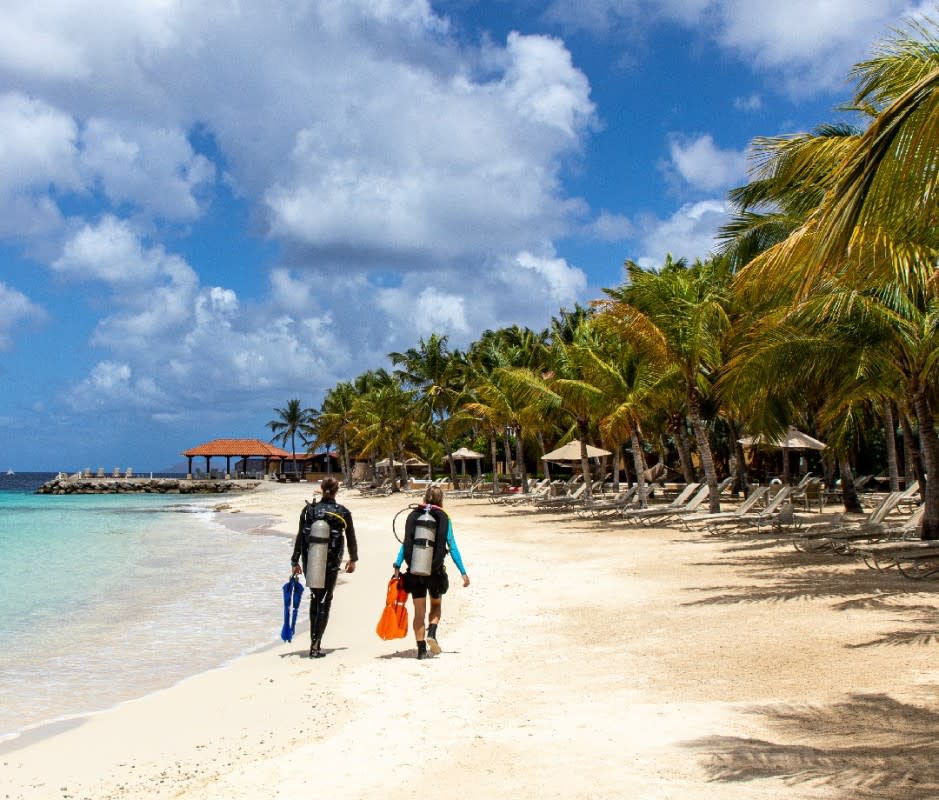
Courtesy of Harbour Village
Where Is Bonaire?
Bonaire, a municipality of the Netherlands, is just 50 miles off the coast of Venezuela. It’s part of the “ABC” island group in the Leeward Antilles that includes Aruba and Curaçao. It’s the least developed of the trio (by far) and the most sparsely populated, with just over 22,000 residents. At 114-square miles—just 22 miles from north to south—Bonaire's size is comparable to the Hawaiian island of Lāna’i.
How to Get to Bonaire
Reaching Bonaire can be a little more involved (especially from Oregon, in my case) than some of the more visited islands in the Caribbean. In the U.S., there are connections out of Atlanta, Miami, New York, and Houston. Several airlines fly here, including Delta, United, American, Southwest, JetBlue, and even Spirit (from Fort Lauderdale) and WestJet (Toronto). Most flights are routed through either Aruba or Curacao, with a few weekly direct flights to Bonaire on Delta (Atlanta), United (Newark and Houston), and American (Miami).
For the most current information on getting to Bonaire, visit Bonaire Tourism’s official website, which provides an interactive map for available flights to the island’s Flamingo International Airport and covers other travel logistics. Bonaire conveniently uses U.S. dollars. English, Dutch, and Papiamentu (Spanish Creole) are the main languages spoken, although many people speak Spanish and French as well.
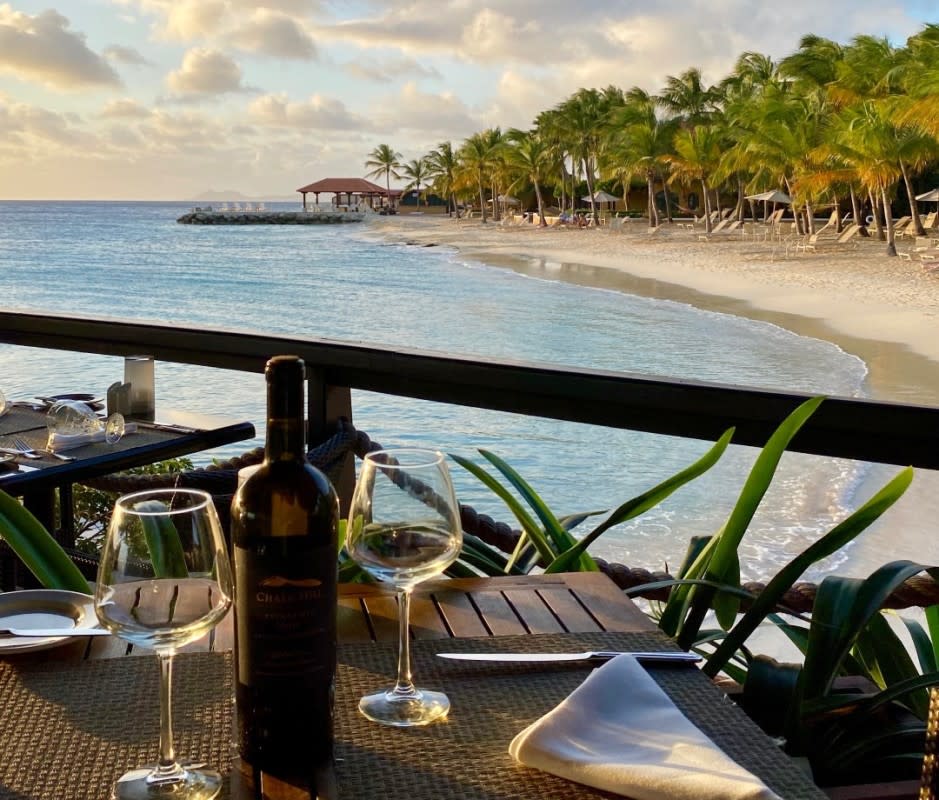
Courtesy of Bonaire Tourism
Best Time to Visit Bonaire
Hotel rates drop and crowds thin during Bonaire’s low season between May and October. November through April is the island's peak season, particularly during the holidays, though November and December see more rain than the rest of the year. Even during the wetter months here, Bonaire remains one of the most arid and storm-free islands in the Caribbean, lying at the edge of the region’s hurricane zone alongside Aruba and Curacao. Caribbean hurricane season officially runs from early June through the end of November.
What to Do in Bonaire
Bonaire is home to an underwater paradise and the Bonaire National Marine Park—the world's oldest marine reserve, designated in 1979. Divers and snorkelers have long lusted after the clear, almost transparent blue waters of Bonaire. The island’s 60-plus dive sites (with 26 more on the neighboring islet of Klein Bonaire) are all well-marked and many of them can be easily accessed directly from shore.
Bonaire’s coral comprises a “fringing” reef which hugs the shoreline like a close-fitting collar, allowing you to swim parallel to the beach a maximum distance of about 200 feet from shore. At least 60 different species of coral grow here, along with over 400 species of fish of all sizes, shapes and colors. Shark sightings, save for huge and harmless whale sharks, are extremely uncommon in Bonaire. While the diving here is world-famous, with steep walls, wrecked ships, and big fish, the abundance of “normal” marine life right offshore is sufficiently stupendous.
Related: 14 Best European Coastal Towns and Cities to Beat the Crowds
Bonaire’s kidney bean shape sees its biggest surf on the rounded eastern side of the island—welcoming mainly expert surfers and divers. The more casual snorkeling and surfing set will want to head to the island’s convex/western side with its calmer, clear turquoise/blue water that lets you watch fish from a hammock.
Bonaire also offers world-class windsurfing and kitesurfing, big game fishing, paddle boarding, kayaking, horseback riding, and a surprisingly robust culinary scene. The island's entry stamp should come with a warning that Bonaire—in all its facets—is highly addictive.
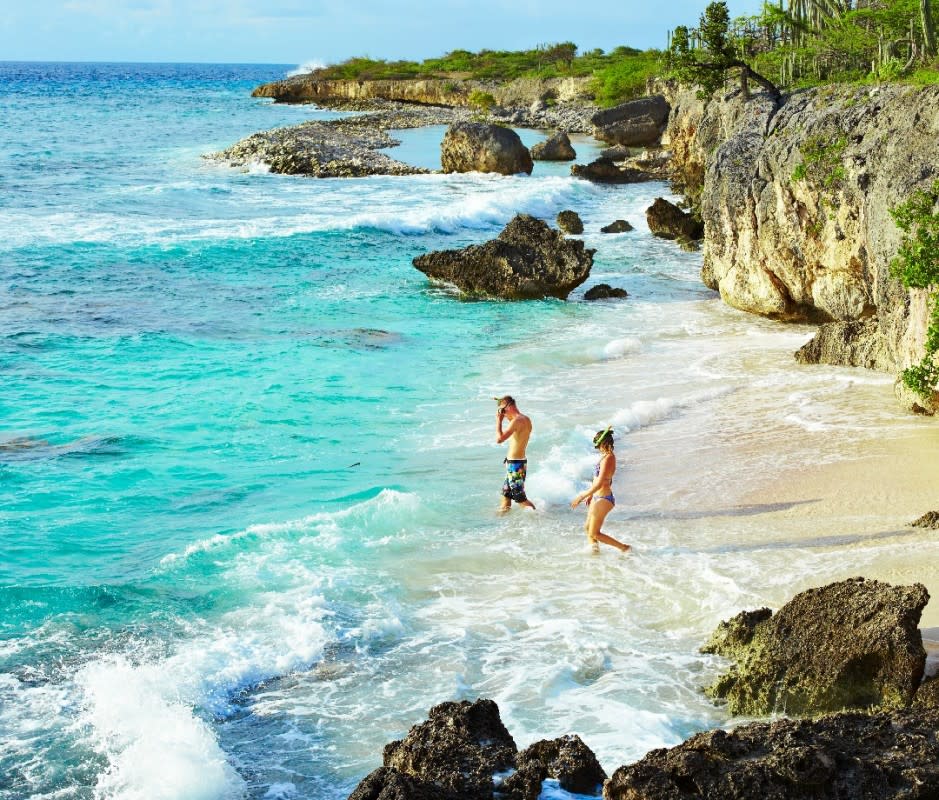
Courtesy of Bonaire Tourism
Day 1: Check in, Gawk at Coral, and Eat at Bonaire's Best Restaurant
Bonaire has plenty of hotel, rental, and Airbnb options, but our vote for the best spot is the Harbour Village Beach Club with its private beach, Great Adventures Bonaire 5-star dive shop, marina, pool, and spa. Set on lush gardens with the requisite rows of swaying palms, the hotel’s rooms are gorgeous and spacious, many appointed with balconies and verandas facing a beach where giant sea turtles lumber ashore to lay eggs on certain nights. The property’s fabulous and convenient beachside restaurant La Balandra with its next-level salmon avocado tartar and duo ceviche (Peruvian and Venezuelan styles) will challenge you to dine anywhere else.
After booking yourself a massage at the resort’s spa for later, stroll over to the hotel’s dive shop to pick up a snorkel, mask and fins. Don’t forget to ask for a dive flashlight in case you want to do some nighttime snorkeling (highly recommended). You can schedule a scuba dive or scuba certification course here, and the resort’s signature “resort dive” includes a short safety lesson and easy excursion down to a shipwreck.
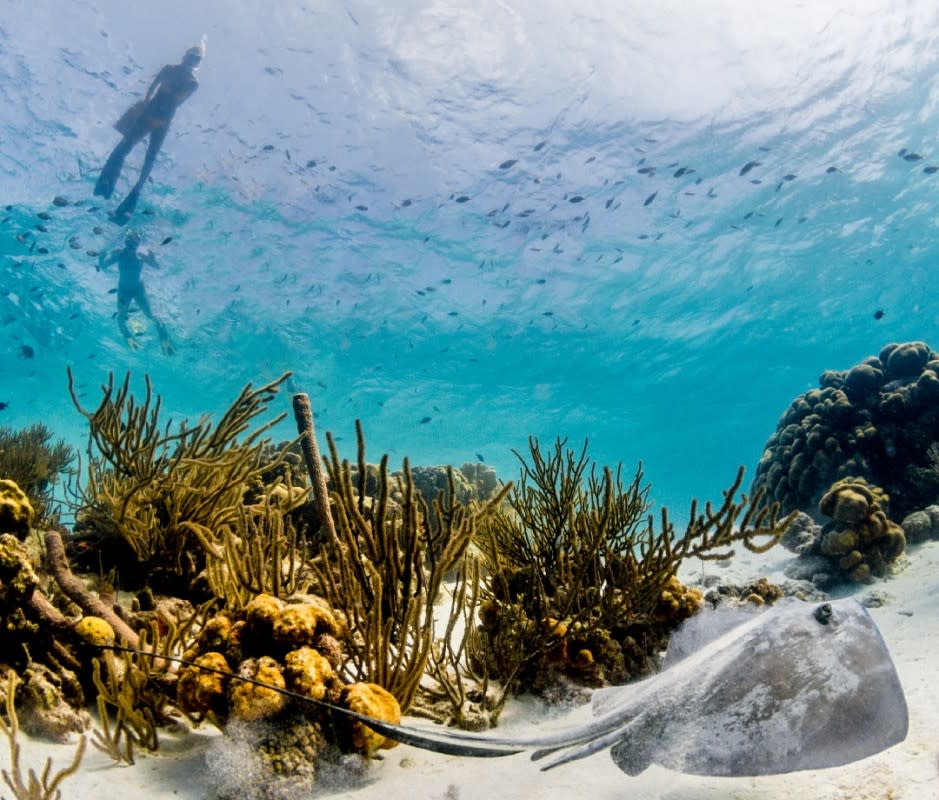
Courtesy of Bonaire Tourism
Warm-up with a casual swim or snorkel along the sandy beach stretching for a quarter-mile from the restaurant to the dive shop. The coral reef is mere feet from the sand, and there’s a swimming rope about 50 yards out, marking excellent snorkeling between here and the beach. The hotel has also set up a half-dozen or so rock towers where you’ll see literally thousands of fish, and maybe an octopus or turtle. At the end of the pier that houses the restaurant, about 20 feet underwater, is the resort’s reef webcam. In other words, text your family and friends before you snorkel and then wave to them as you swim by.
For dinner, head over to Bonaire’s most famous restaurant, the Brass Boer, located at the nearby Delfins Beach Resort. Brass Boer has won awards as the best restaurant in the Caribbean. It’s not cheap, but the Chef’s Special 6-course meal—plus the highly-recommended caviar starter—is in its own heavenly class of gastronomy. Don’t be skimping on dessert.
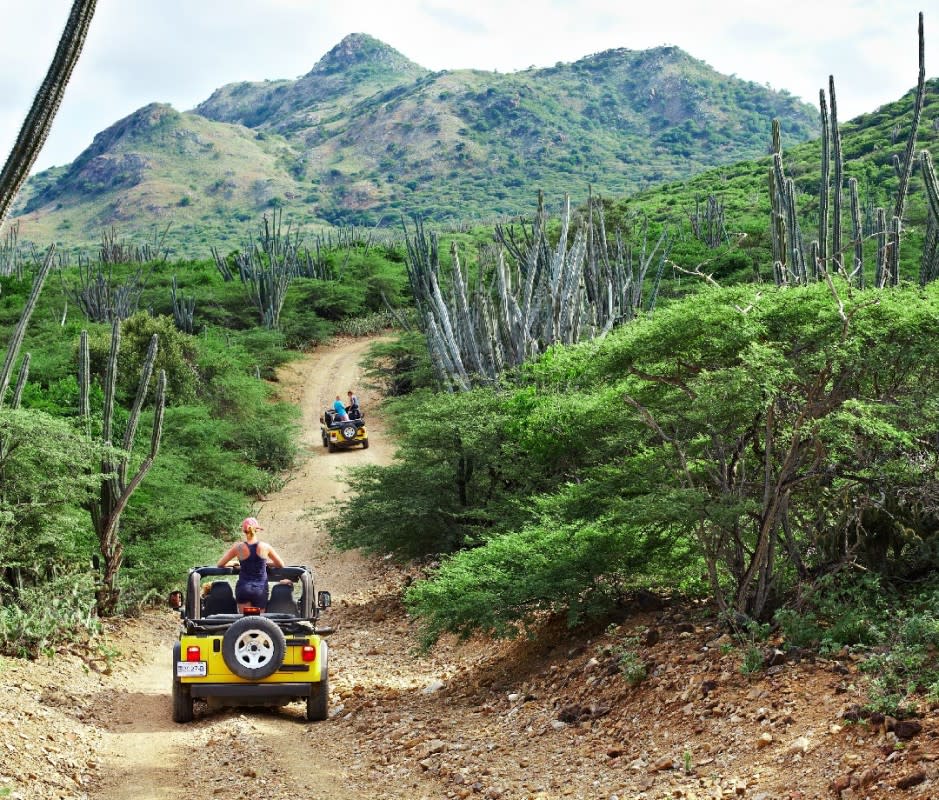
Courtesy of Bonaire Tourism
Day 2: Explore the Backcountry, Try Landsailing, and Sip Blue Curaçao
After some leisurely morning coffee-sipping on the veranda, head out to explore 14,000-acre Washington Slagbaai National Park. The island’s only land-based national park occupies the rugged and remote north side of the island. You’ll see plenty of iguanas, wild donkeys (they love carrots), and a stupendous variety of birdlife—including yellow shouldered Amazon parrots, pink flamingos, blue tailed emeralds, parakeets, and hummingbirds galore—in this wild desertscape accented with flowers, cactus, and manzanita.
Hikers will want to clamber up Monte Brandaris. At 791 feet, it’s the highest point on the island. The trail is decent, although you’ll be doing some scrambling on the summit. You’ll pass plenty of kadushi (aka Peruvian apple cactus), prickly pear, and candle cacti, so don’t venture into these parts without closed-toe shoes. A good hiker can make the round trip in just over an hour, but plan for longer as the view is worth savoring. Bring more water than you think you’ll need. Bonaire can get hot.
Dozens of excellent stretches of sand in the park for swimming and snorkeling include 1,000 Steps Beach, where you can access some mind-boggling coral reefs just offshore. Amp the octane by taking a classic cliff jump into the Caribbean at Bocca Slagbaai. Drop by the park’s informative visitor center, furnished with some excellent exhibitions explaining the island’s social and natural history.
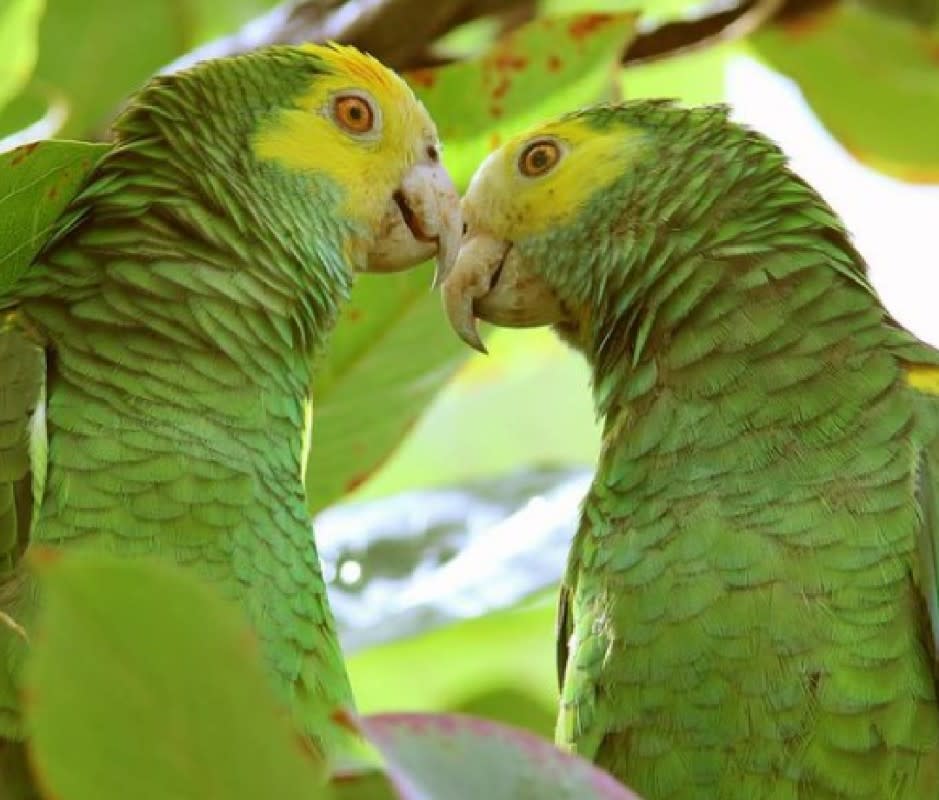
Courtesy of Bonaire Tourism
For lunch, stop at Posada Para Mira for local cuisine, live music, warm island hospitality, and some interesting grub options. Yes, they serve iguana—it’s pretty bony—as well as goat stew, fried plantains and sweet potatoes, fresh homemade juices, and cold, local beer. The spicy sangria here is pretty fine too.
Bonaire's reliable tradewinds provide some of the world’s best kiteboarding and windsurfing opportunities—as well as landsailing on its broad, gusty flats. Try it out with Landsailing Adventures, which will set you up in 3-wheel blokarts that can reach speeds (by professional racers) of nearly 130 mph.
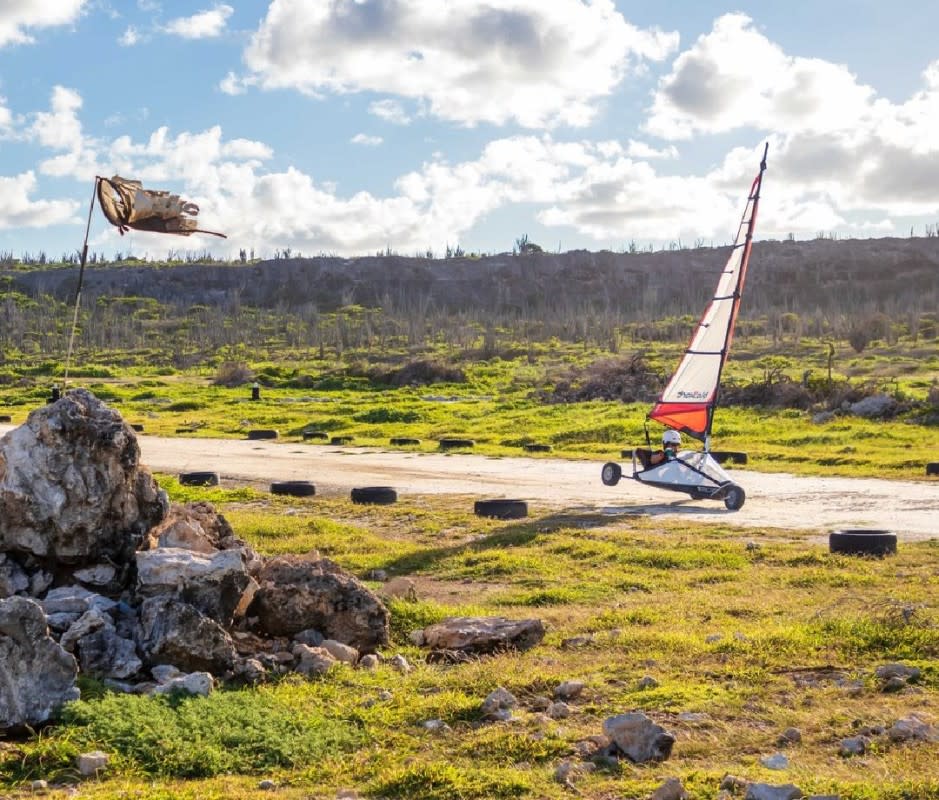
Courtesy of Bonaire Tourism
Stop at the Cadushy Distillery in Rinćon after your drive, where island versions of rum, vodka, and gin are all served. The local favorite is blue curaçao, which the area is famous for—and dangerously delicious when mixed with fresh fruit juice. Rinćon is also a laid back spot to have an afternoon beer and lionfish burger at one of the local "snacks" or taverns. Allen Snack was our favorite.
Dine at Ingridiënts, a top oceanside spot with a fantastic wine list. The restaurant is at the Buddy Dive Resort and is an island favorite for cocktails, sunsets, and seafood. Chase dinner with drinks at Karel's Beach Bar, a popular craft tiki bar that showcases Bonaire’s hopping nightlife. There’s plenty of live music in town if clubbing is on your agenda.
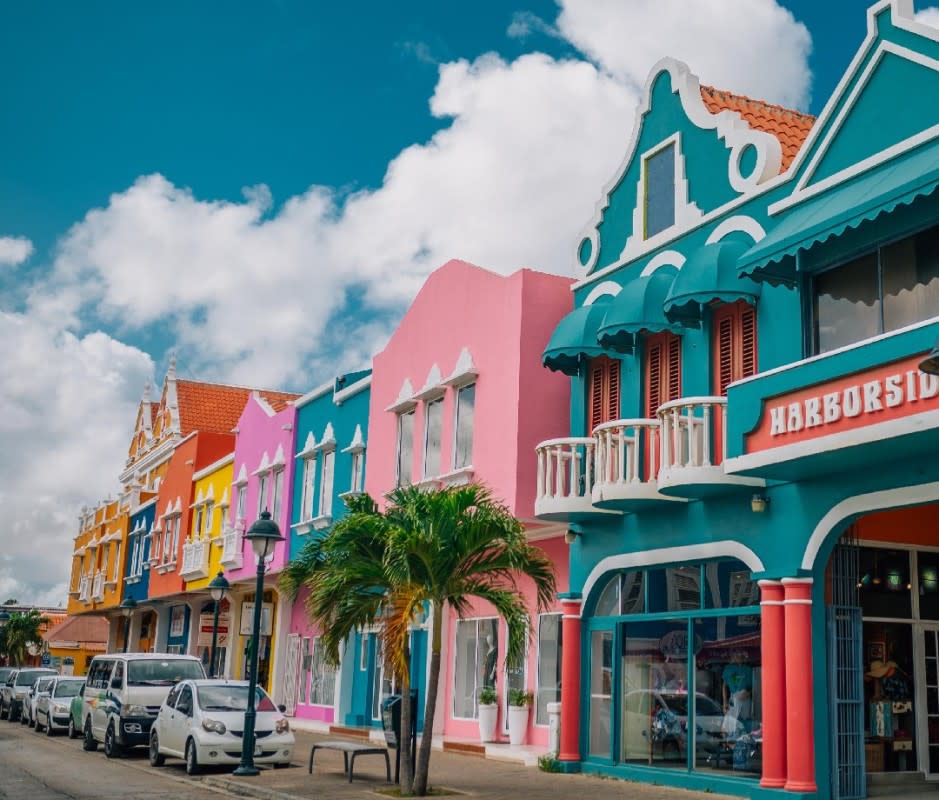
Courtesy of Bonaire Tourism
Day 3: Isle Hop, Take a Dive, and Dine on a Schooner
Grab a fresh-baked croissant or the famous Big Papa Omlet at Between 2 Buns, just a short stroll from Harbour Village. It’s rumored to be one of Harrison Ford’s favorite hangouts when he’s breakfasting on Bonaire. Then hop onto a dive boat or water taxi and head to Klein Bonaire, a protected, 1,500-acre uninhabited island about a half mile offshore from Bonaire’s central west coast near Kralendijk. The paddleboarding here is good, and the snorkeling and diving are fantastic, so you’ll want to spend as much time in the water as possible. Pro tip: You can camp there on holidays (it’s a fun party scene). Pack a lunch and make sure your sunscreen is reef safe.
In the afternoon, head back to the Buddy Dive Resort and learn about the Coral Renewal Project. Since 2022, more than a dozen coral nurseries have been established to further the recovery of Bonaire and Klein Bonaire’s coral reefs. More than 50,000 coral starters have been “outplanted” in these underwater nurseries, with over 70 coral strains represented. You can learn about the restoration efforts, and then snorkel with a guide to the underwater coral nursery/restoration sites.
Have lunch with your feet in the sand at Beach Bari Chogogo, a resort-based beach restaurant and bar which is as popular as it sounds. The frozen daiquiris here are strong, refreshing, and best paired with a pair of fresh tuna tacos.
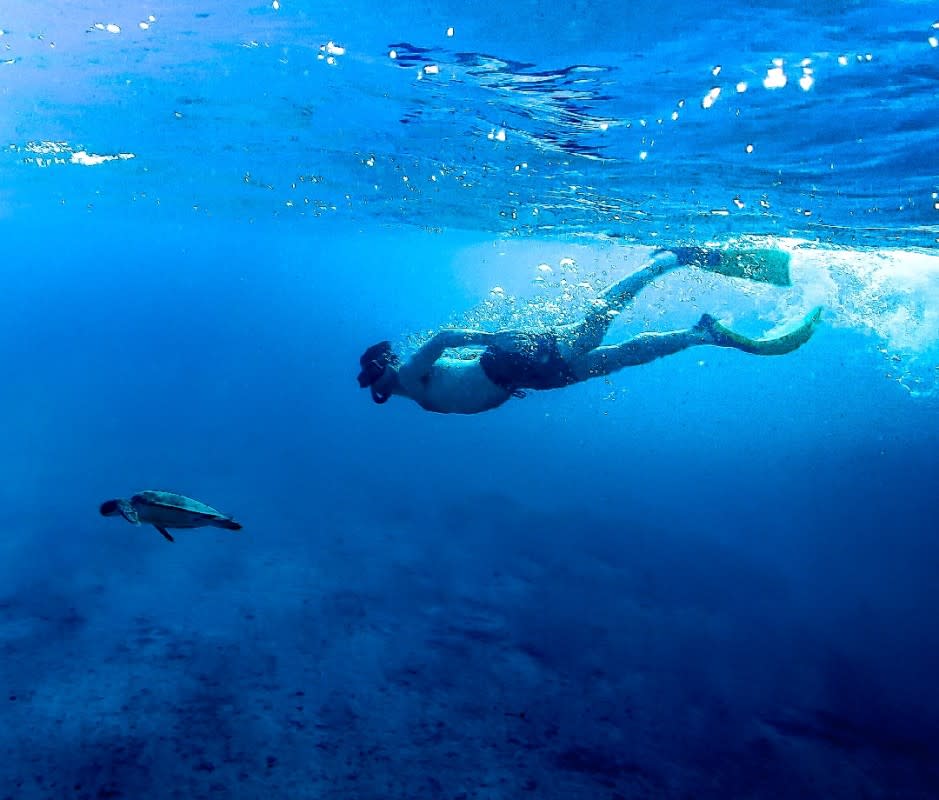
Courtesy of Bonaire Tourism
Then return to Harbour Village’s dive shop for a scuba experience. If you’re already certified, you can head out with one of their expert dive masters on one of the resort’s four dive boats—or just swim out from the dock. No dive card? No problem. Sign up for a “resort” dive where you’ll learn the basics and then visit one of the Island’s many underwater shipwrecks. The dive shop has paddleboards, snorkeling gear, and excellent instructors.
Stroll over to the marina to board for dinner with Melisa Sailing. This classic schooner takes you on a cruise along Bonaire’s coastline, while treating you to a six-course meal served on deck with paired wine and spirits. The real pinch-me moment happens when the captain turns off the lights, gliding you through the outer Caribbean with only the moon and stars leading the way.
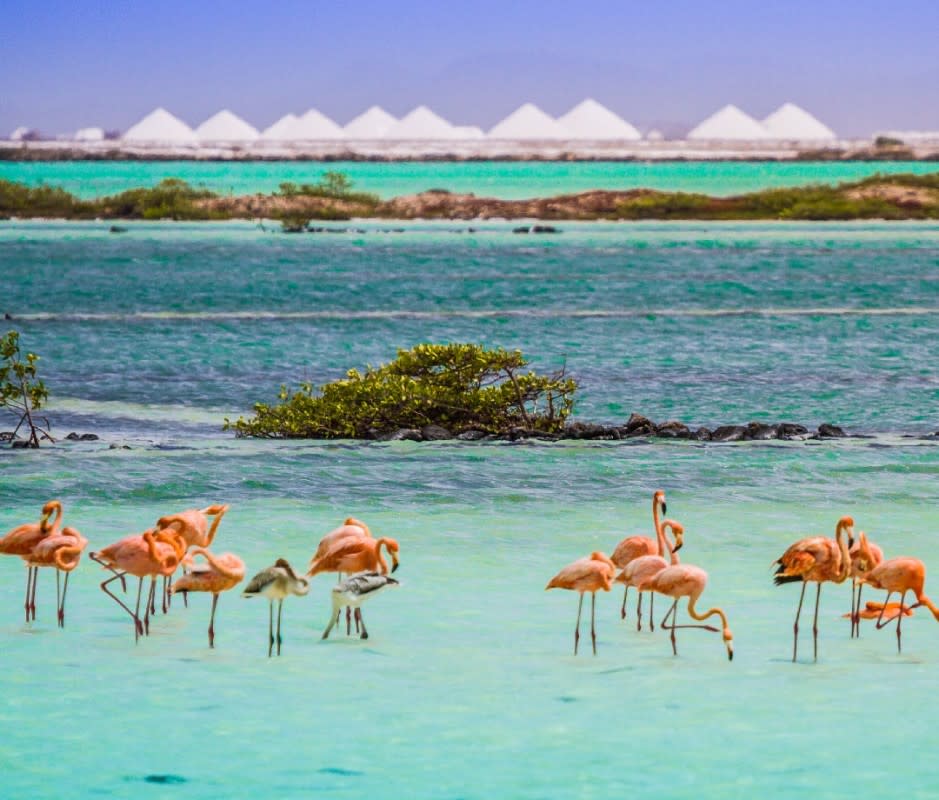
Courtesy of Bonaire Tourism
Day 4: Mount a Horse, Count Flamingos, Ride the Surf, and Hit the Spa
Grab a coffee and pastry at Number Ten, the island’s newest downtown breakfast/brunch spot in downtown Kralendijk. Then spend the morning horseback riding with Horse Ranch Bonaire. You’ll be paired with a horse that matches your ability (and riding ambition) for a spectacular trail ride through Bonaire's wild countryside furnished with pink flamingos, friendly “wild” donkeys, and beautiful mangrove forests. The wide, flat trail is mellow, with plenty of opportunity for experienced riders to break into a trot or gallop.
After brunch at Bagel & Bloom, a cozy spot in downtown Kralendijk, drive to the south end of the island to see famous colorful salt pans and huge mountains of salt. From the island’s lighthouse, you’ll spot several white coral stone huts lining the beach. These were built in the 1850s to house slave labor that fueled the island’s famous salt operations. After Bonaire outlawed slavery in 1863, many of the freed slaves remained on the island. Some of their ancestors still live here today, working to preserve the island’s cultural heritage.
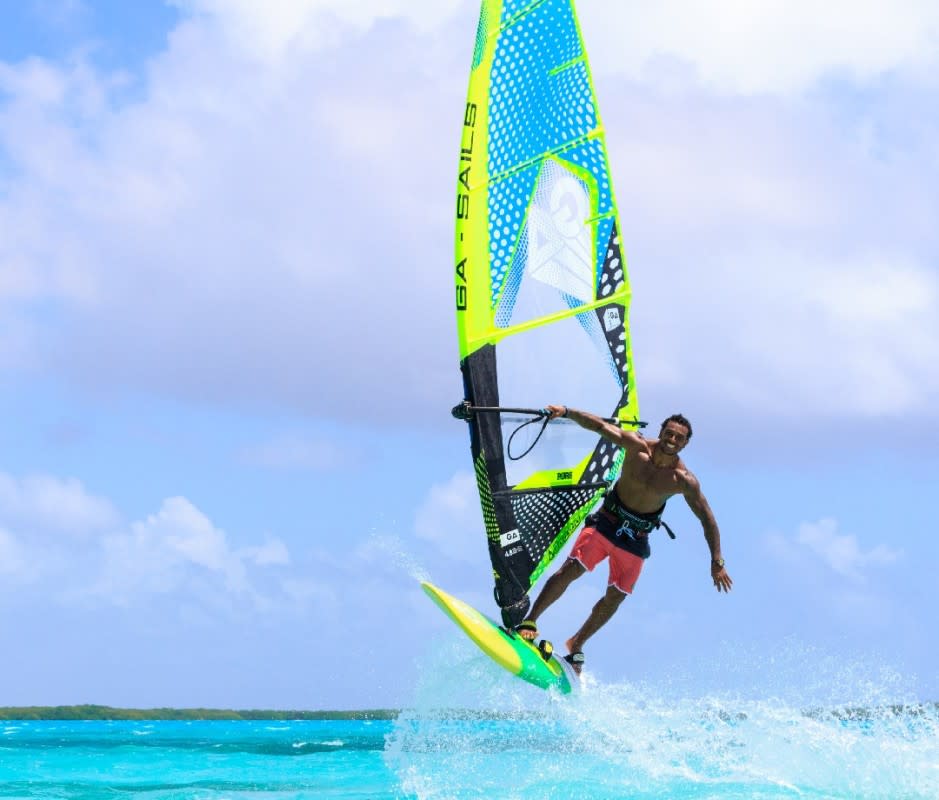
Courtesy of Bonaire Tourism
Stop at Jibe City and the HangOut Beach Bar for an afternoon of windsurfing—where lessons are available. The Lac Bay is huge, shallow, and fueled with steady trade winds and colliding currents—an excellent place for both beginners and experts to shred at their own comfort levels. A designated kiteboarding area is just a few miles down the coast at the white-sand Atlantis Beach. Here, you can rent equipment, get lessons, and enjoy flat water and steady off-shore winds of 17 to 22 knots.
Finally, return to Harbour Village in time for that Swedish massage you wisely scheduled at the resort’s spa. Dine at the Ocean Oasis Beach Club, a fun, casual restaurant, and don’t forget your suit, towel and snorkeling gear for that one last plunge. At least until your next four phenomenal days in beautiful Bonaire.

